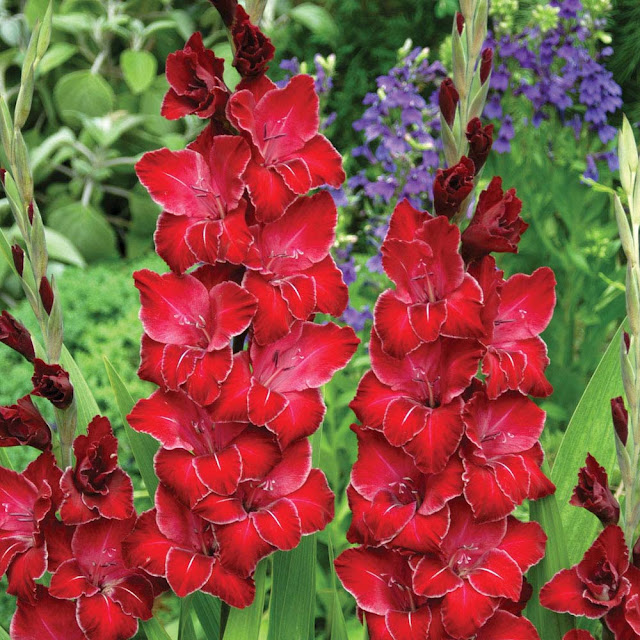 |
| How to grow gladioli |
Gladioli are native to Mediterranean Europe, Asia, Tropical Africa and South Africa, but to be fair the center of diversity is located in the Cape Floristic Region, where most Gladiolus species were discovered.
They are considered half-hardy in temperate climates, and grow from rounded, symmetrical corms, that are enveloped in several layers of brownish, fibrous tunics.
 |
| Image credit - Claude Monet |
Growing Gladioli
Gladioli grow best in a well-drained soil in a sunny position. If you are planting out a reasonable area with gladioli then you can make efforts to prepare the ground in early spring.
Cover the area with a thin layer of well-rotted farm manure and then dig in. Then rake bone meal into the surface at a rate of 3-4 ounces per square yard. Heavy soils or soils that are too light will need to be improved and this can be done by working in plenty of peat or organic matter.
 |
| Image credit - lostgardensofheligan.blogspot.co.uk |
You can extend the flowering season by making three or four plantings, that way the same variety will provide blooms throughout the summer.
Do not plant the corms too shallow as they can topple over under their own weight when in full flower. If you are at risk of high winds them make sure that the flowering stems are supported by stakes.
How to overwinter gladiolus corms
Gladioli corms that can survive in a dormant state when lifted and stored. In milder areas of the UK and in sheltered, well-drained, parts of the garden, it may be possible to leave the corms to overwinter in the ground. Cut back the tops and cover them with a thick mulch to protect them from winter cold and ground and ground frosts.
For related articles click onto:
HOW TO GROW GLADIOLI







No comments:
Post a Comment